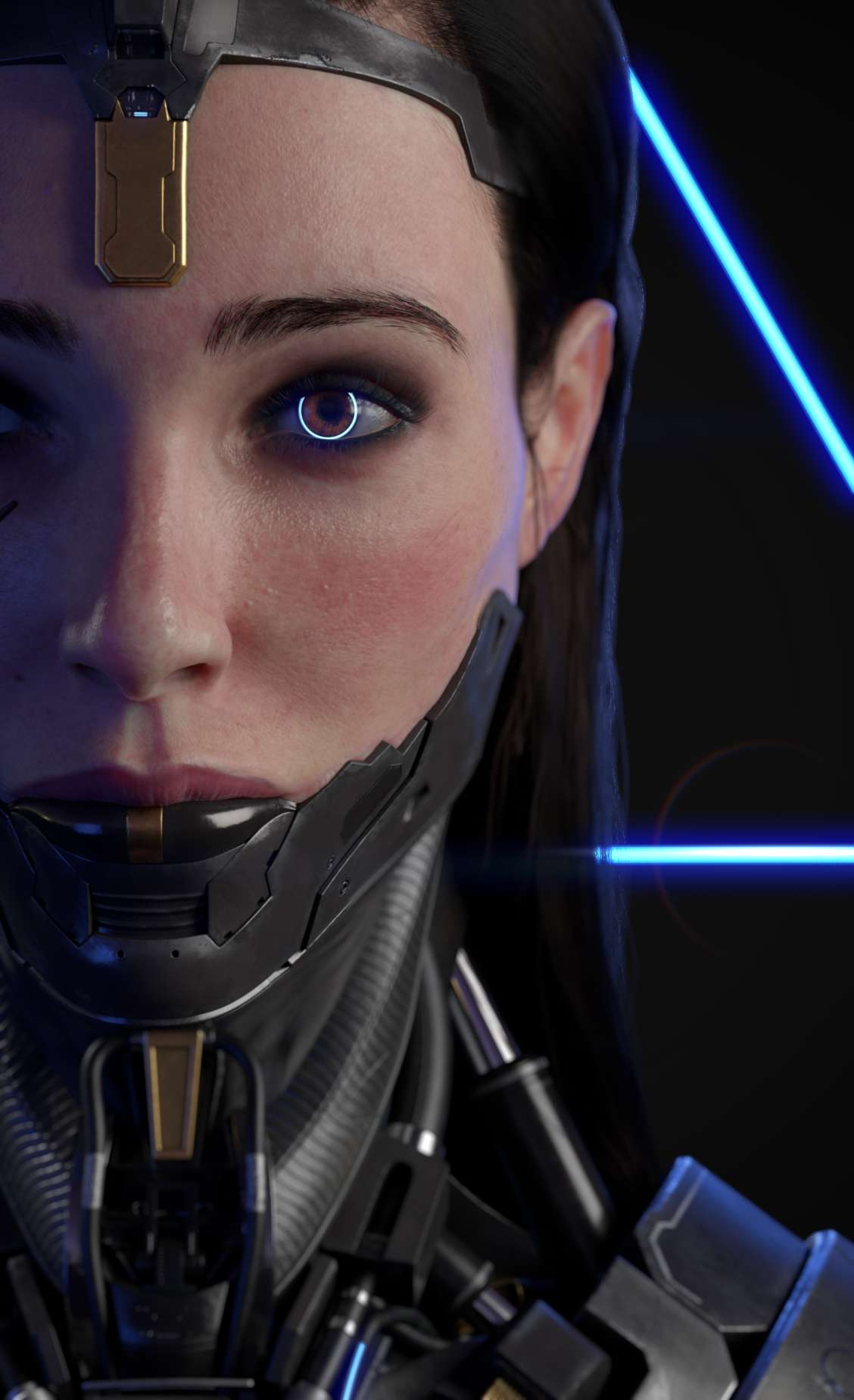
NEON is my final project for the intermediate level at Think Tank Training Centre – Online. Based on a concept by Young Qin, it was very suitable for me as I wanted to break into making 3d characters but still be able to apply some hard surface techniques that I love and have passion too. In this article I will be explaining the process I went through, things I wish I did and even the mistakes I did too.
I hope that this article would be clear and useful for anyone making a character bust. Let’s JUMP IN..!!
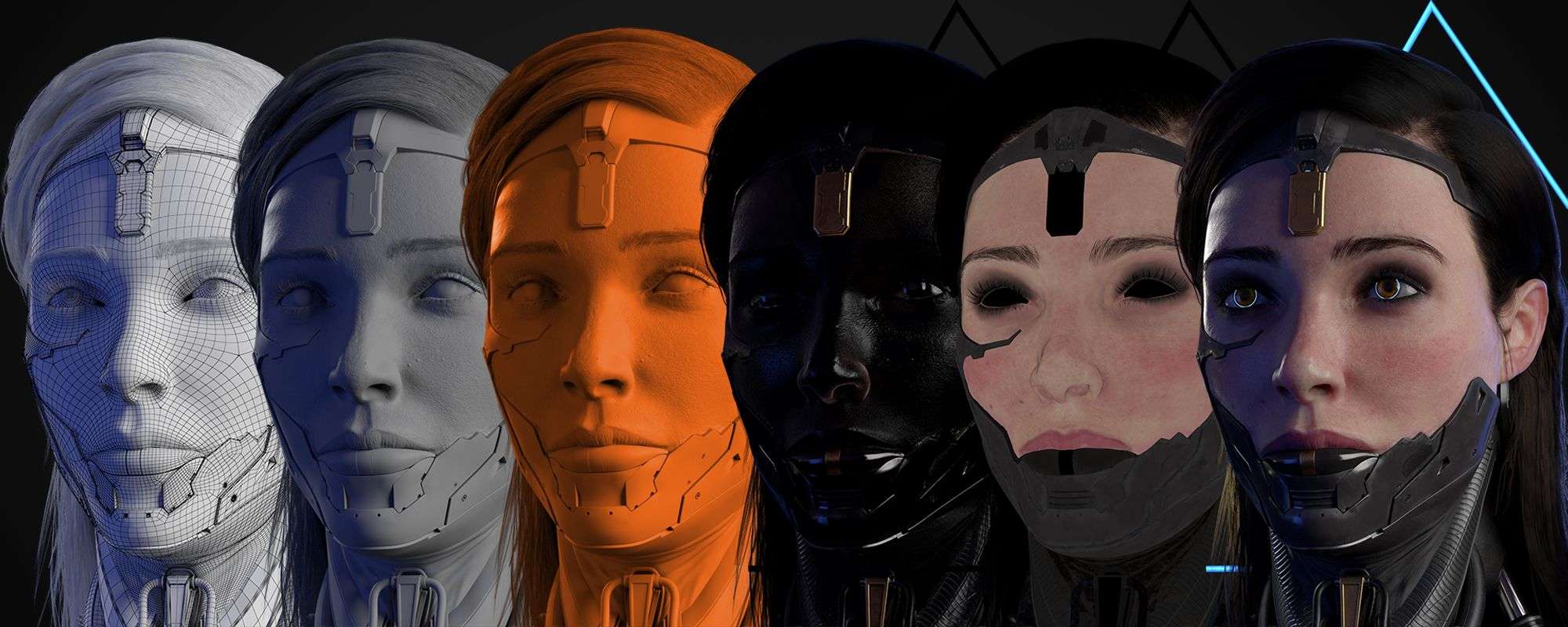
Reference
In the beginning, I try to collect as many references and similar artworks as I could, to help me have a clear idea of what I will be modeling. In some 2D sketches, some areas are just full of ink and hatches so you will have to figure these areas out and find other parts to model and put there.
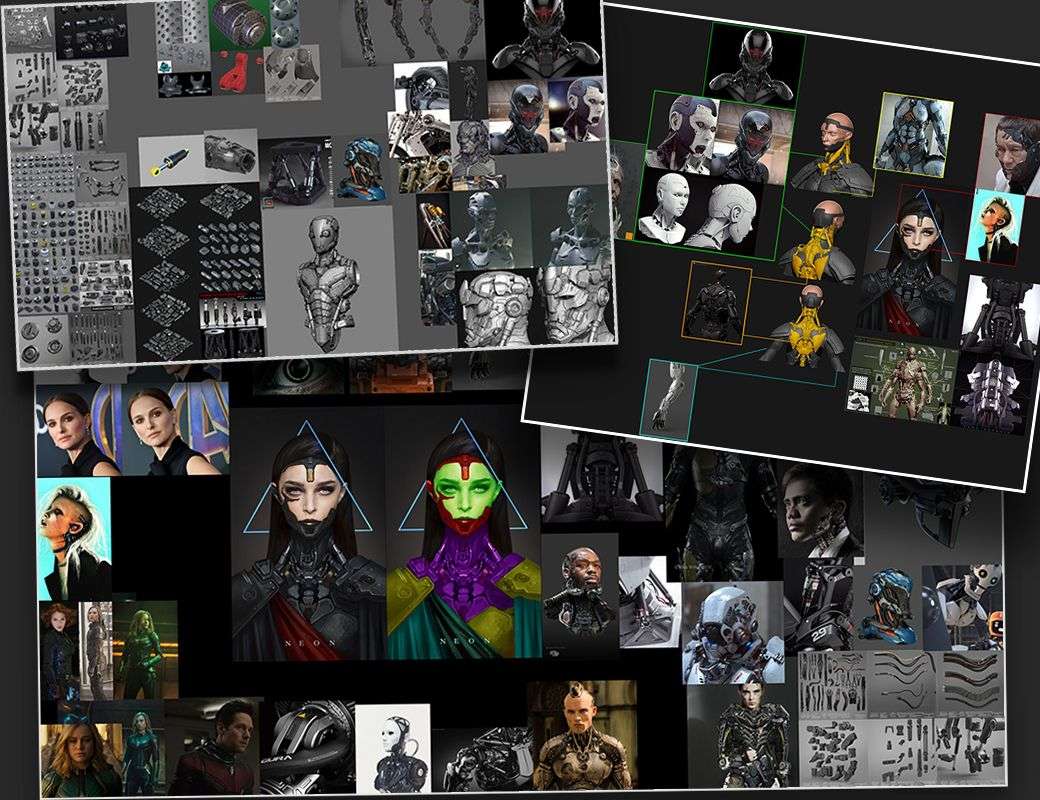
In my case Neon is a queen with a mechanical body. This helped me to narrow my search in artworks to only Hydraulic pistons muscles and cables, not gears and wires. This step is important because having a clear idea of what you will do will saves a lot of time of going back and forward and causes the feeling of lose therefore give it enough time in the project’s schedule.
Blocking In ZBrush
In ZBrush, I start blocking the whole model; organic, clothes and hard surface parts using Dynamish or Sculptris Pro Mode.
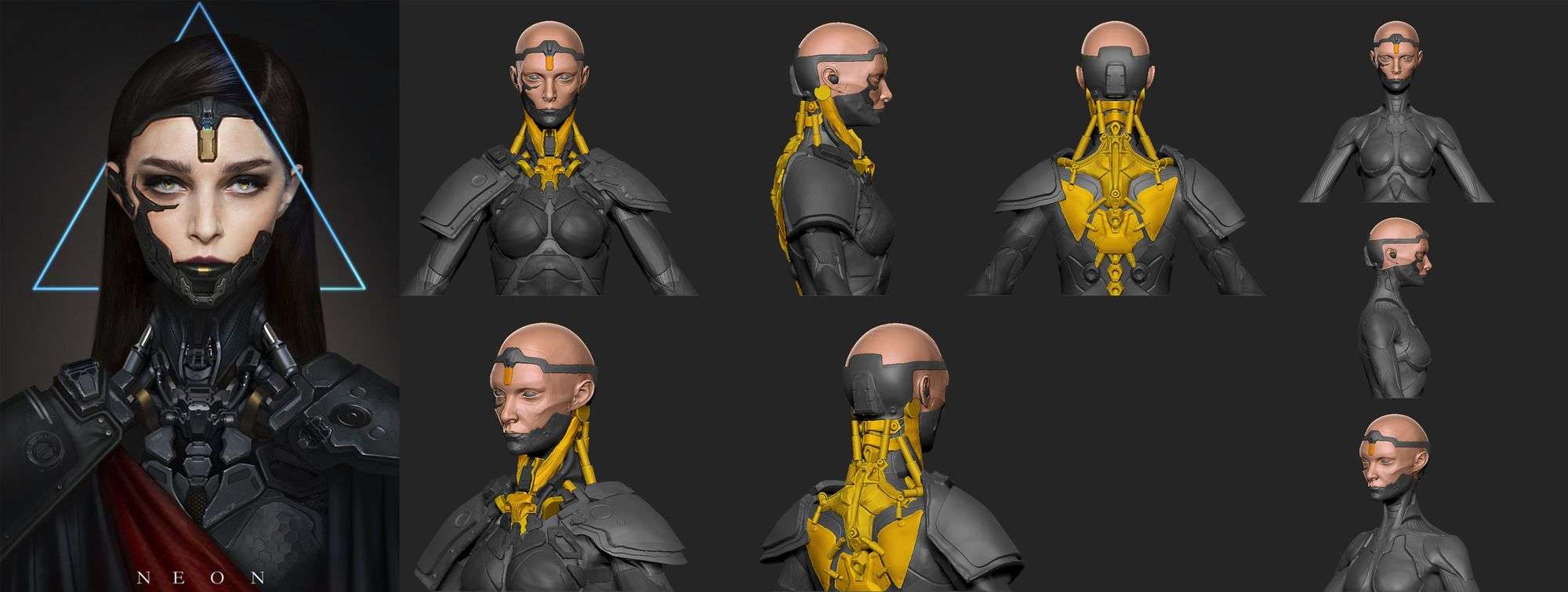
I start blocking out the large forms first then the small ones. It is preferable to block the organic-hard surface parts (metal parts in her jaw, the crown on her head, chest and shoulder pieces) as clean as possible because I will use this geometry in the retopology process and the more they are clean the better result I will have.
The wires, cables, and pistons I just block them using primitive shapes and snap to curve Brush in ZBrush because it is easier for me to model and add details to them in Maya later.

Retopology
I import the model and start doing retopology in Maya. I use a technique that I learned from my friend Nicolò Granese. I do a retopology for each piece individually, then I apply crease for the desired edges where will be a hard edge, later subdivide the piece, finally, I chamfer the creased edges.

Modeling The Head
In this part, I start sculpting the head trying to match the reference I have.
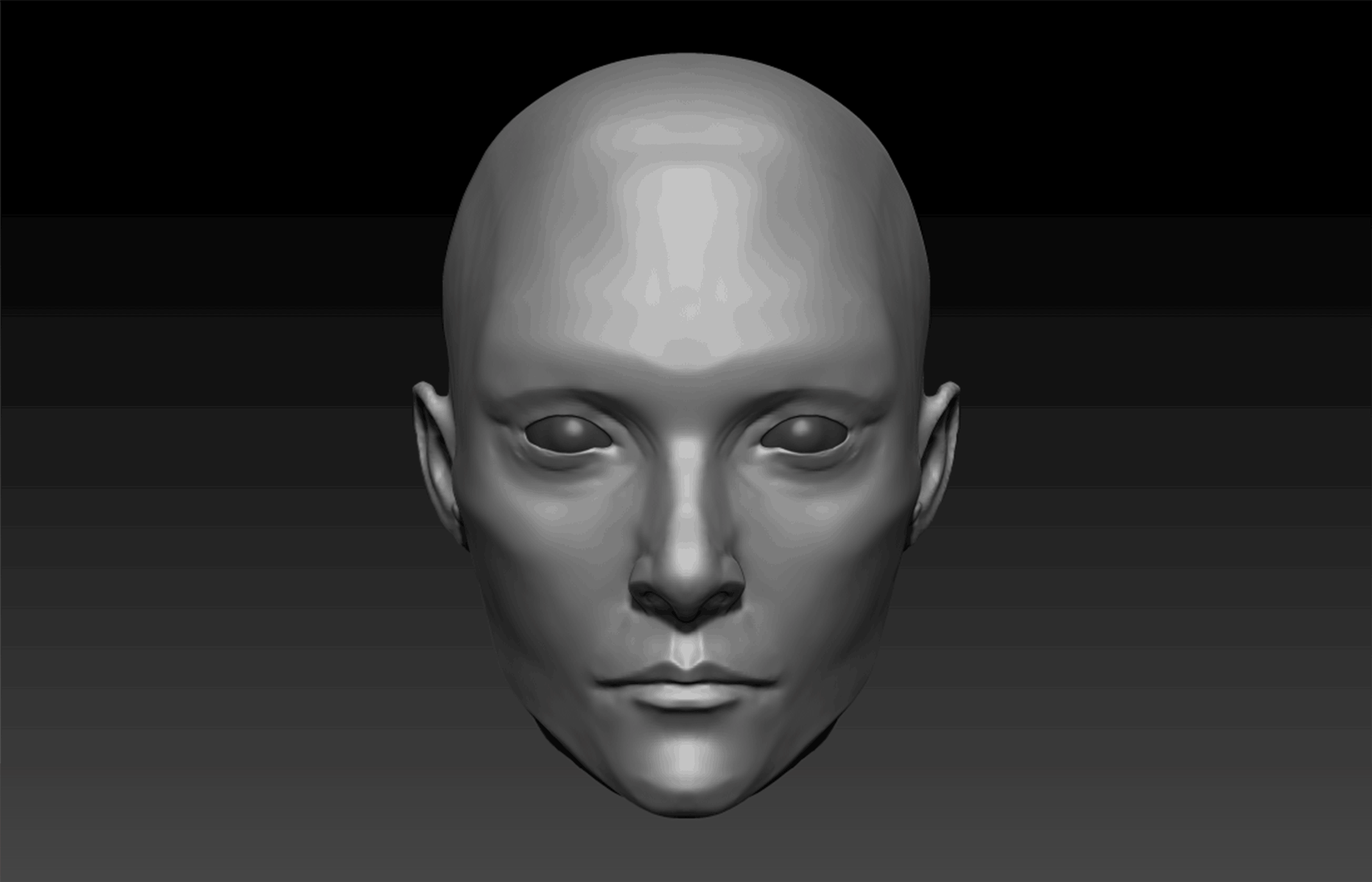
After that, I used the XYZ multichannel maps from Texturingxyz. In addition to the amazing maps and textures they have. They also have great tutorials and case studies that helped me a lot.
After that, I used the XYZ multichannel maps from Texturingxyz. In addition to the amazing maps and textures they have. They also have great tutorials and case studies that helped me a lot.I used Zwrap to apply the displacement on my model by following this killer workflow. I tend to use a large breakup noise from ZBrush as the first layer of the skin then import the displacement maps using this amazing UDIM Importer
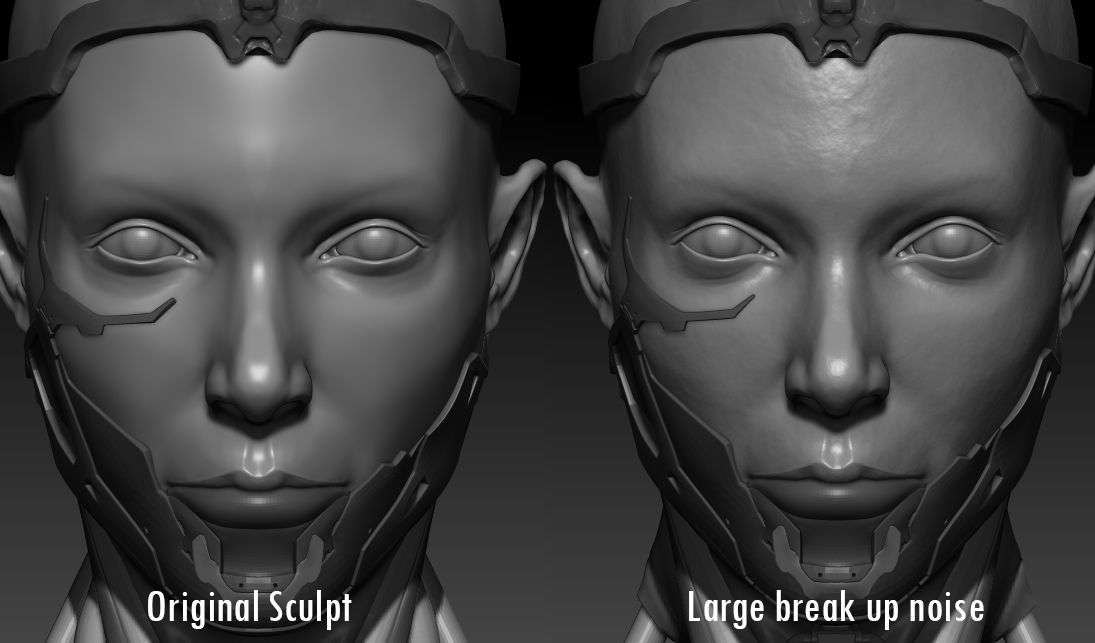

Then I start sculpting some wrinkles, skin folds and details in another layer. Finally, I start breaking the symmetry in my model in a third layer.
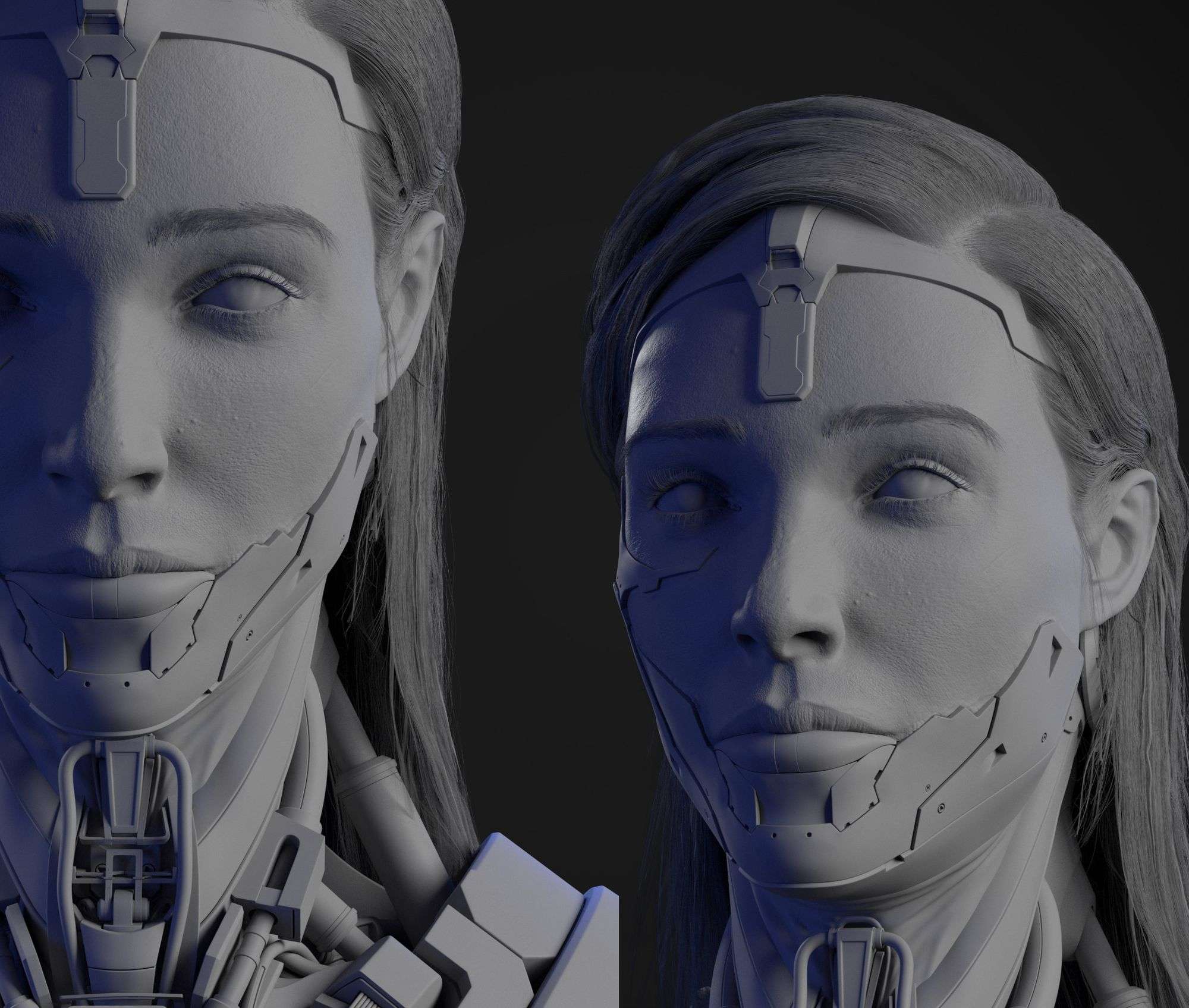
Note: When exporting the Displacement maps, it is better to export the XYZ fine details and the sculpted details separated in different displacement maps so that u can control the amount of both details separately. Otherwise, the details might seem at the same level which is not accurate.
Modeling Head Surface Parts
This is my final touches on the model. I use SPline to model the cables, I use my own generic kitbash to fill the gaps in the model and at the tiny details like screws, cable heads, structural parts, and small pistons.
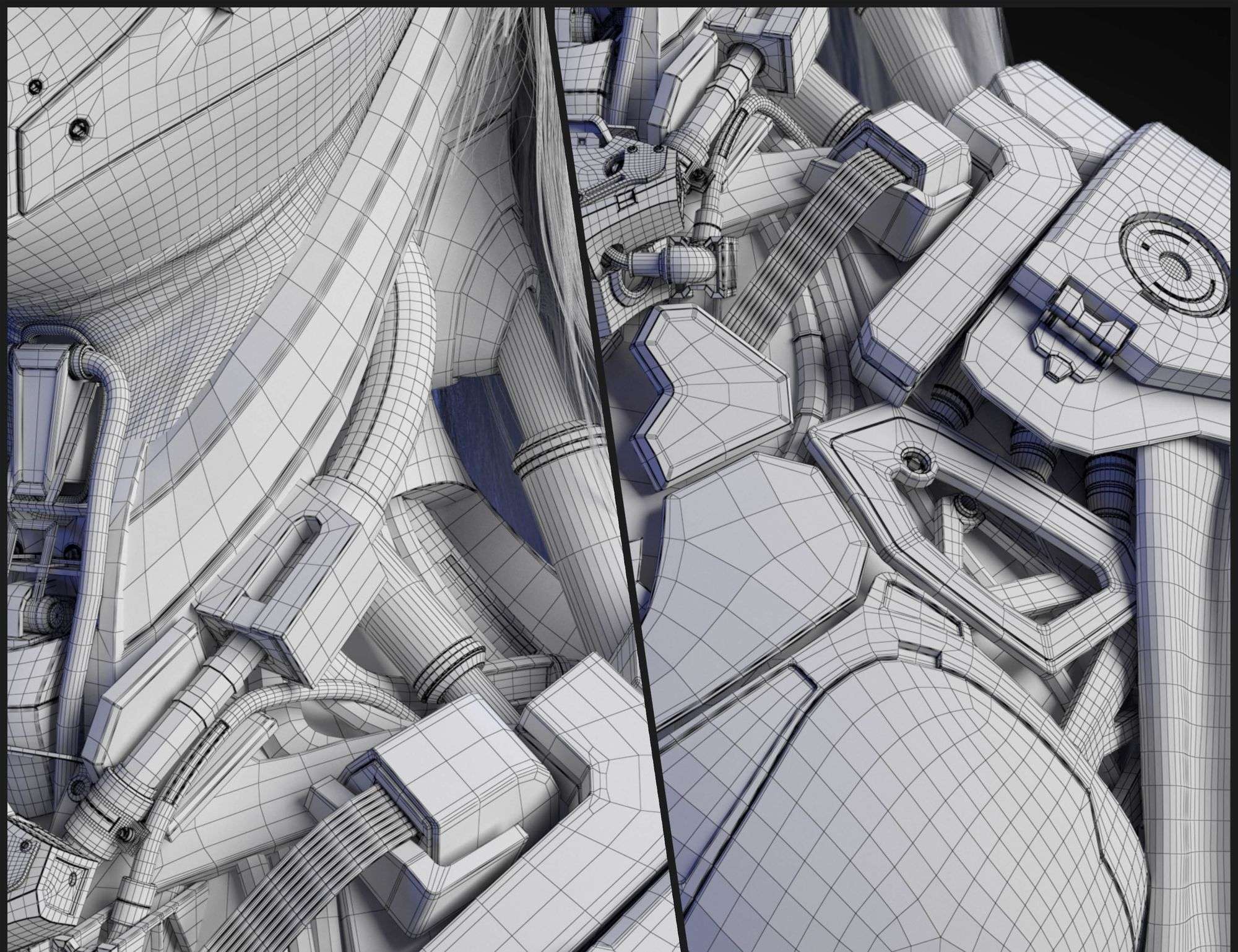
Note: it is highly recommended that you start building your own kitbash if you are doing a hard surface model it will make life much easier and faster and good looking results too. I keep a separate file with all the kitbash I did to re-import it and use it in another project.
By this stage, I start to think about interesting parts and good-looking angels in my model where I might put my cameras.to start enhancing and pushing them furthermore and to decide which details should be modeled and others that I might apply as normal in the texturing phase.
Arranging the Scene in Maya
Always remember to arrange the scene and rename the objects correctly before it gets much more crowded. I learned to split my project into three main groups; Left, Right, and Middle. Also, I make a group for the cameras and another one for my initial lights.
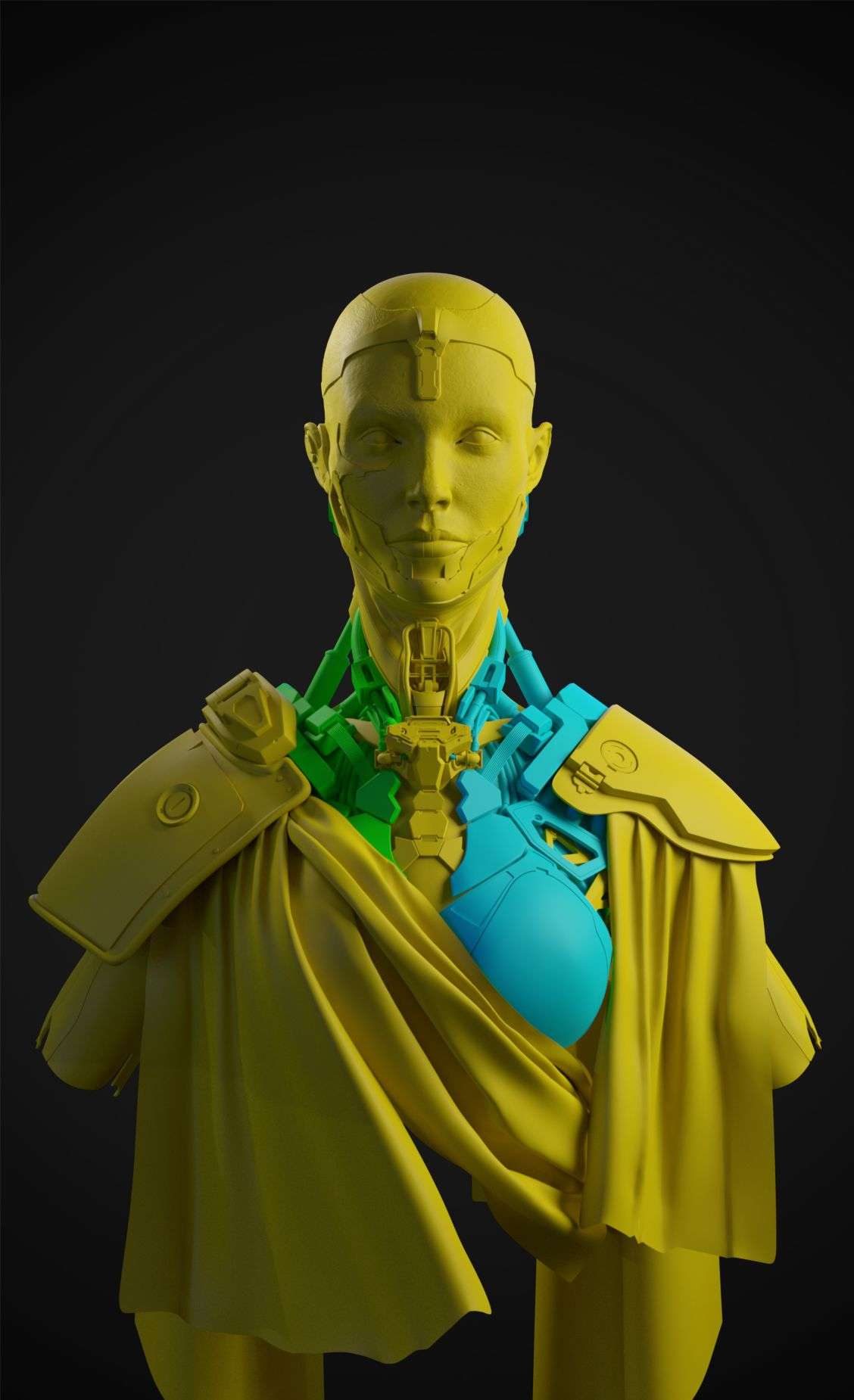
Texturing The Body
I mainly prefer to use Substance Painter for texturing the hard surface models. I find it much easier and faster in terms of painting all the maps together (diff, spec, gloss, bump )
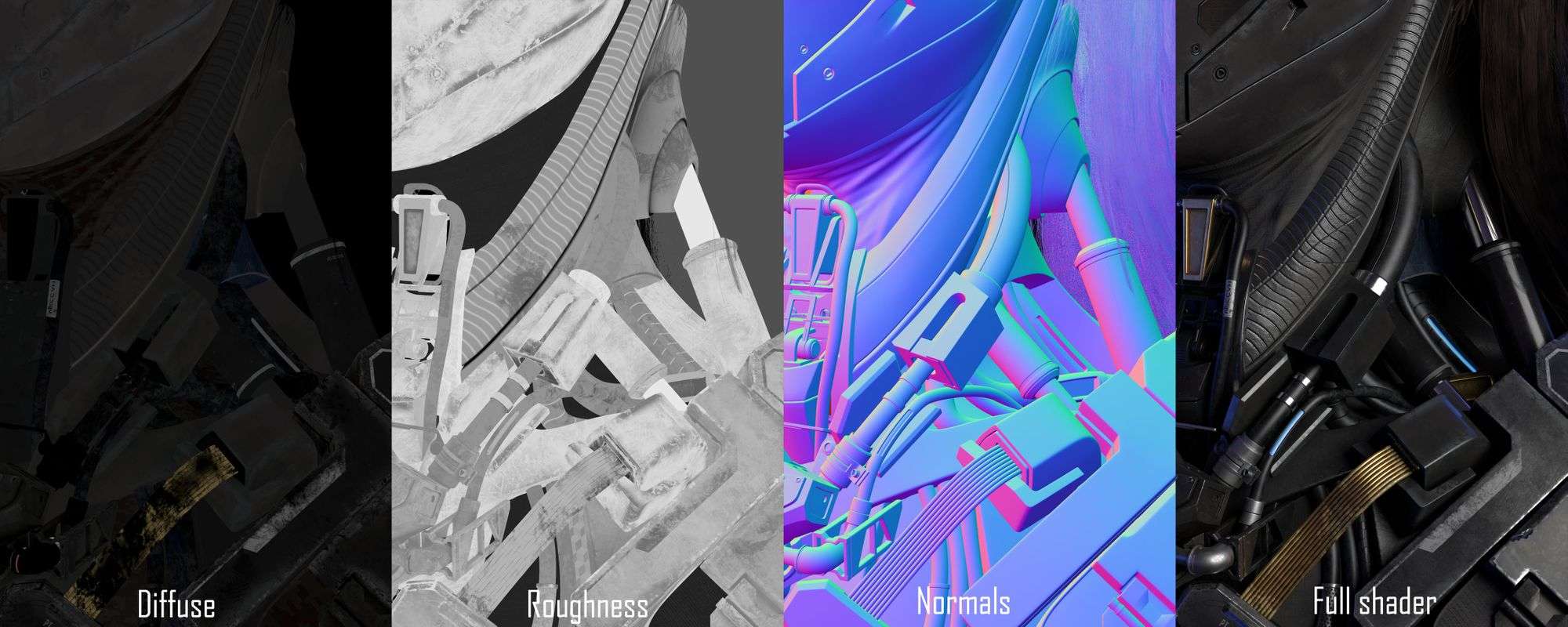
But before jumping into Substance I tend to apply basic shaders inside Maya and settle down my main color palette. Some times a grab a picture that I love its color palette and use Adobe color wheel to extract its Raw colors and use them in my model.
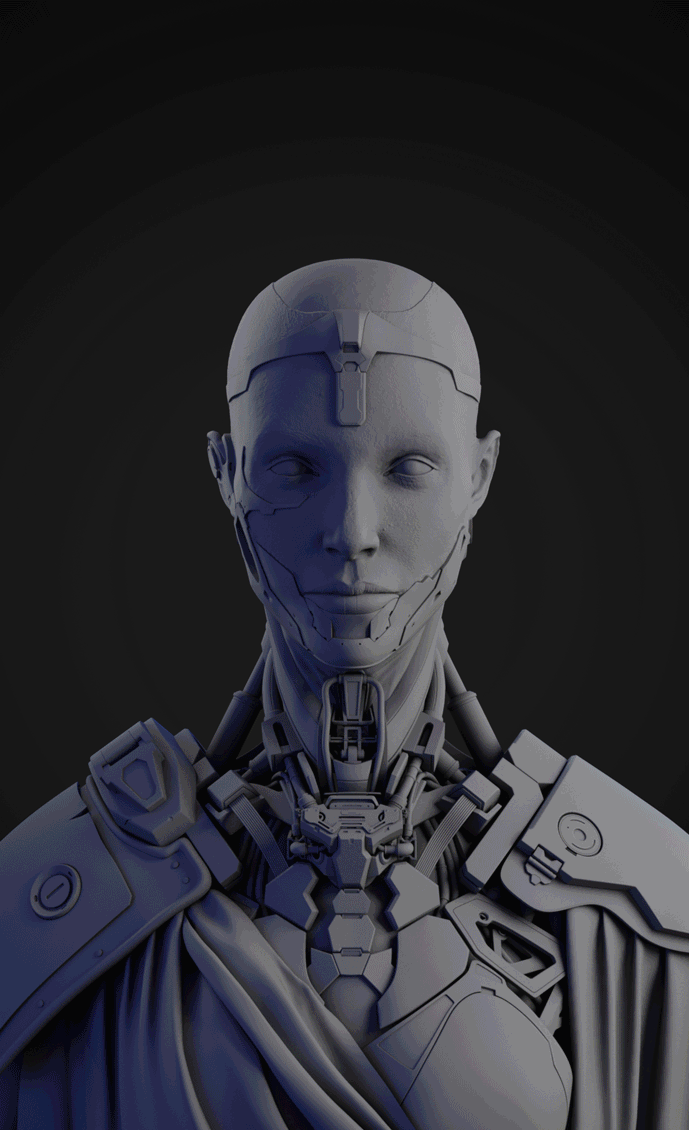
Here is a list of tips I use while texturing.
-
Reference, reference, and reference.
I always tend to find references for the material I want to apply. And analyze it in terms of color variation, roughness, and wear.
-
Color variation
I prefer to use two to three degrees of the same color to give it a variation, and it depends on the level of wear and the number of scratches.
-
Anchor points
I use anchor points technique so that the newly added details got the same effect of scratches and wear as the modeled one.
Skin
For the skin, I use XYZ Multichannel maps. I used Zwrap again to apply the albedo/Diffuse map to my model using the same killer workflow. After that I use foundry Mari to fix some areas, enhancing some details and add makeup to my character. I also paint the rest of the maps (specular, glossiness and SSS Mask) inside Mari

The specular and glossiness maps will need some modification, so I plug them into a remap node and start manipulating them until I got satisfied with the results. it is just a matter of trial and error.
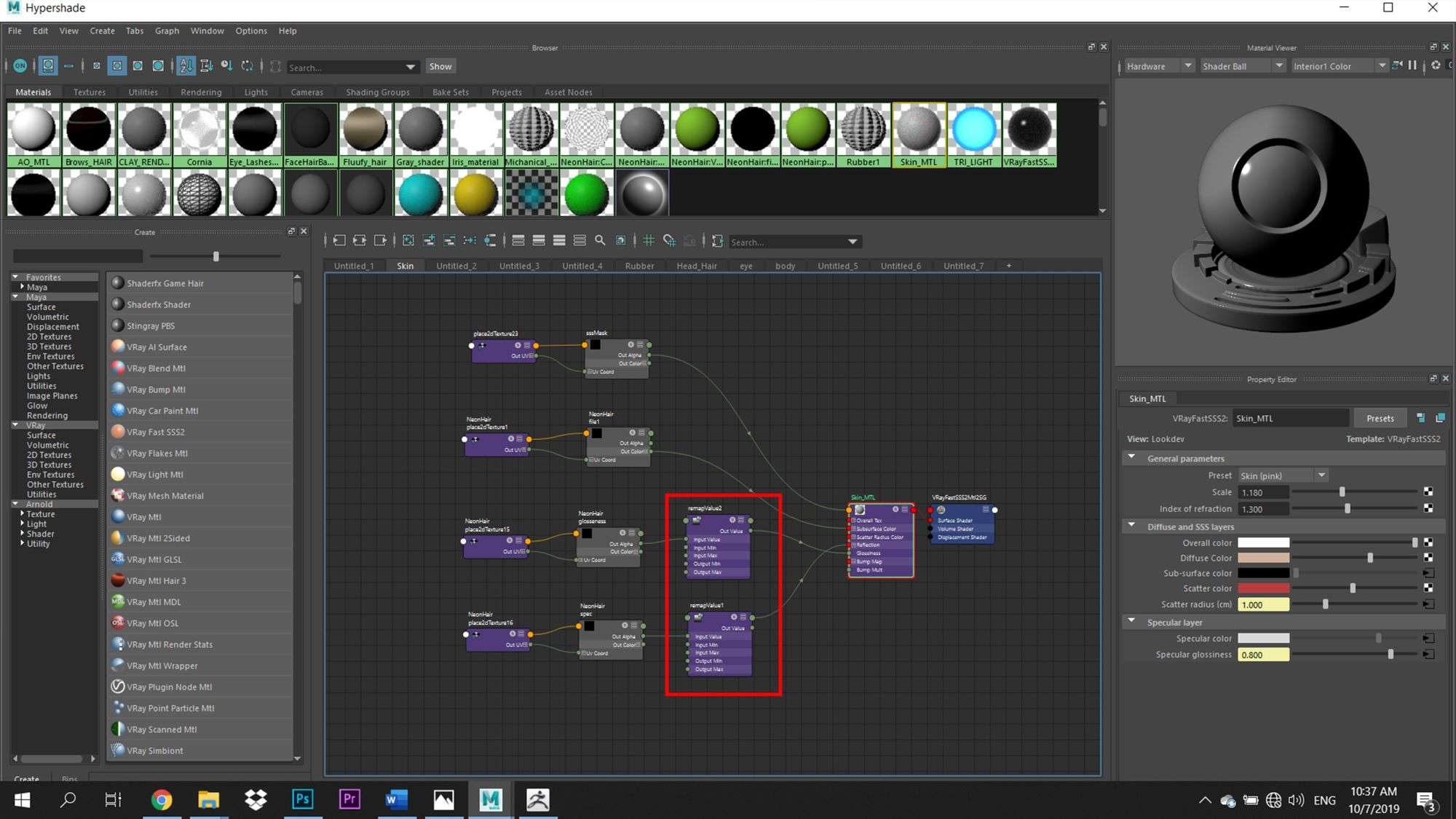

Hair
For the hair, I used Xgen. I simply start drawing the guides and painting the density and mask maps. I prefer to split my hair into multiple descriptions to give me better control.
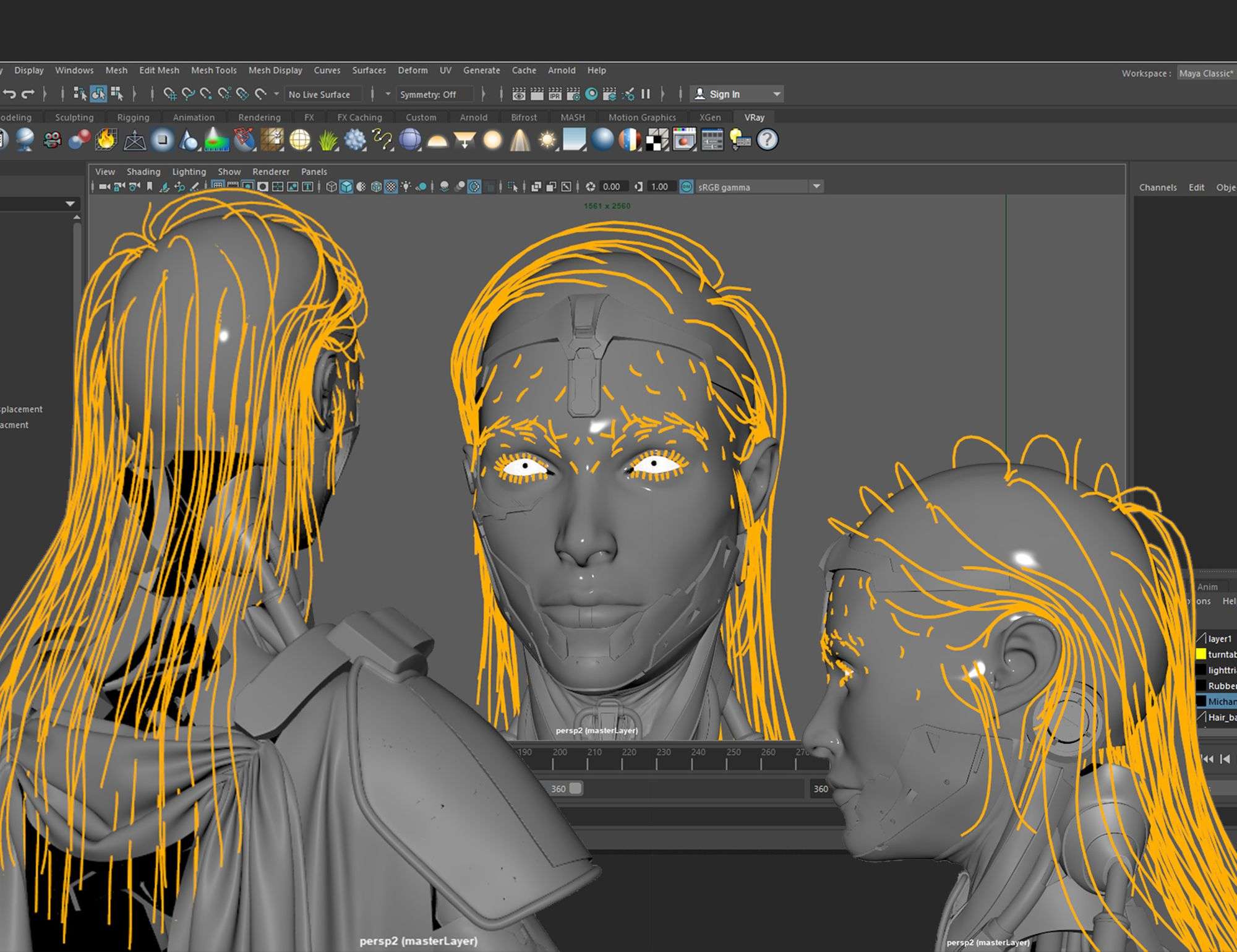
it was really hard for me because it was my first time and I had to learn by the hard way I went through a lot of problems and sometimes I had to remake the hair but here are some general notes about creating hair with Xgen.
- Set up the project correctly and don’t use space or underscores or dots in the naming
- Make a scalp for the hair ( the mesh that the hair will grow from. You don’t have to
- Apply the collection for the whole model.
- UVS should be clean and in 0-1 space
- Don’t delete the history of the hair.
Lighting and Rendering
For the lighting, I like to start looking for similar renders or artworks that I like and try to mimic the way they are lightened.
In my case, I used Vray for Maya. I used a key light, Fill light and two rim lights. I also use an HDRI from HDRI HEAVEN. There are some theories about lighting it really helped me decide where to put key light and other lights. Always start with the key light and then the rim and the fill lights.
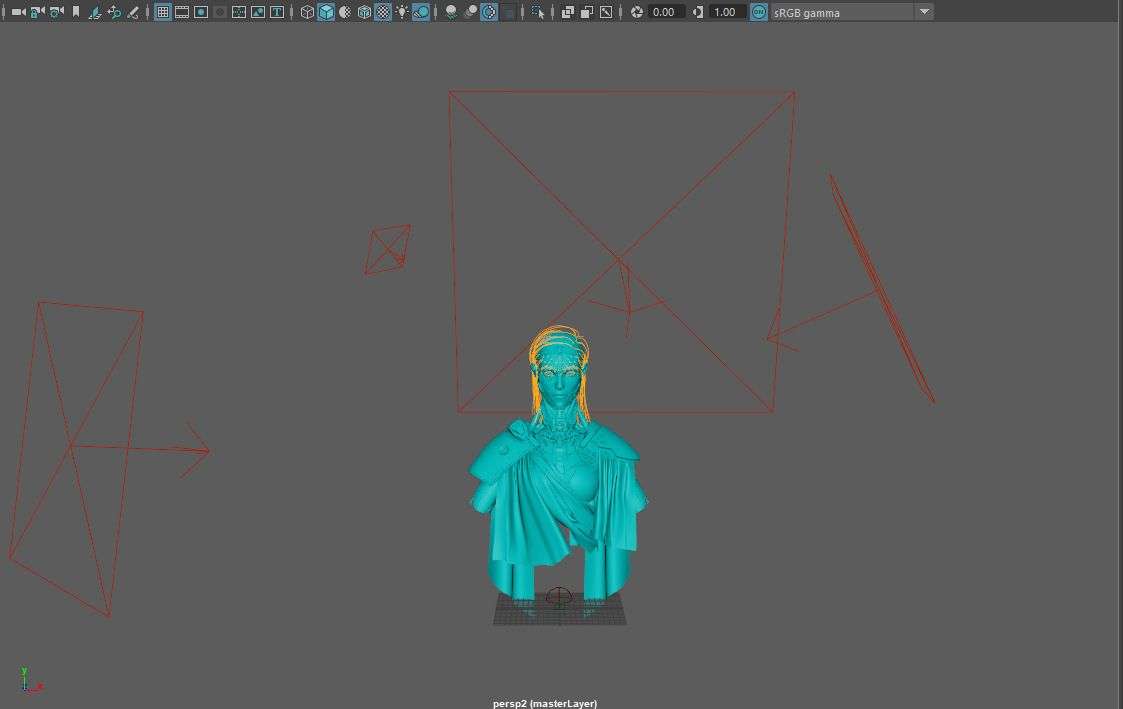
Final Renders & Turntable


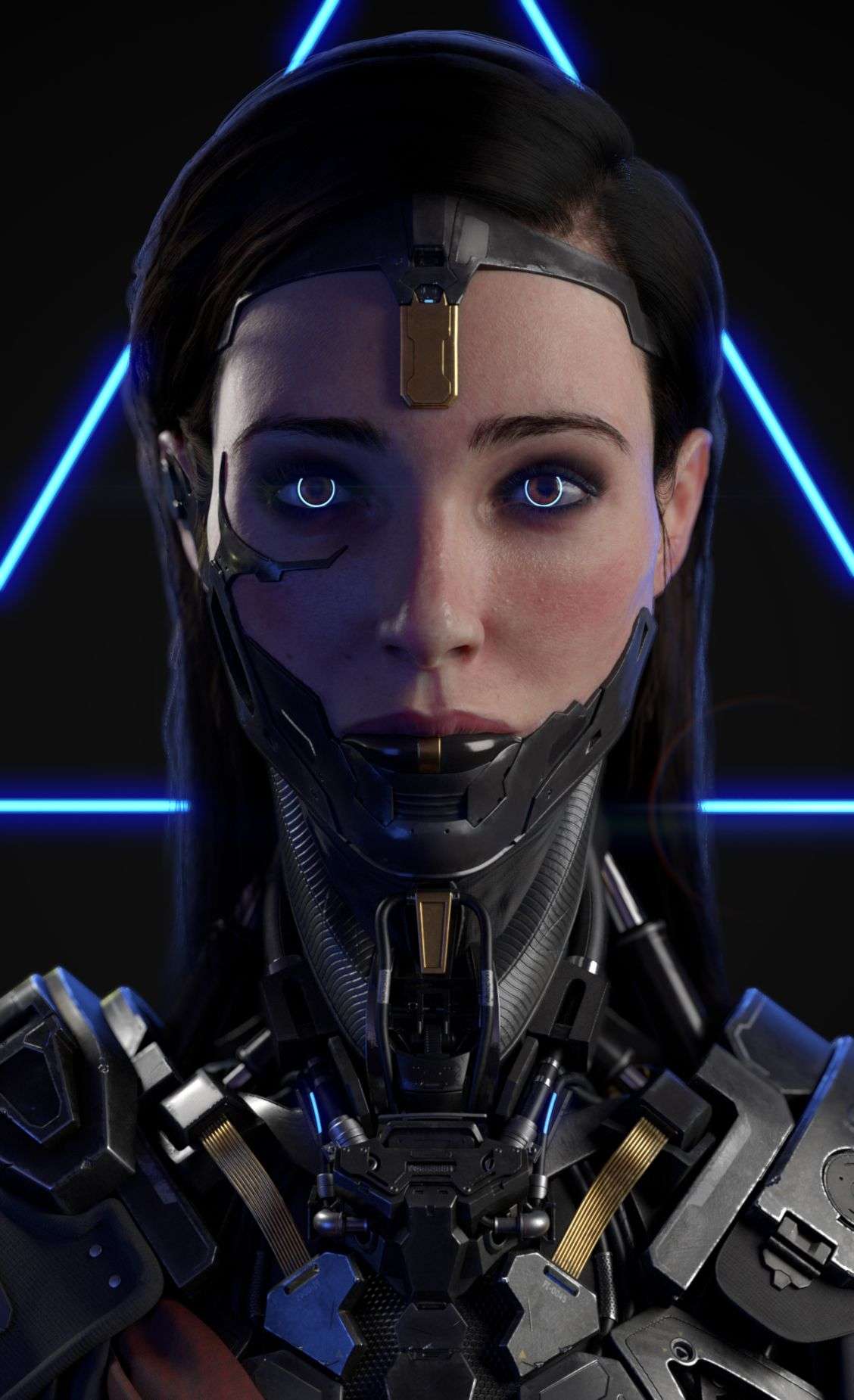
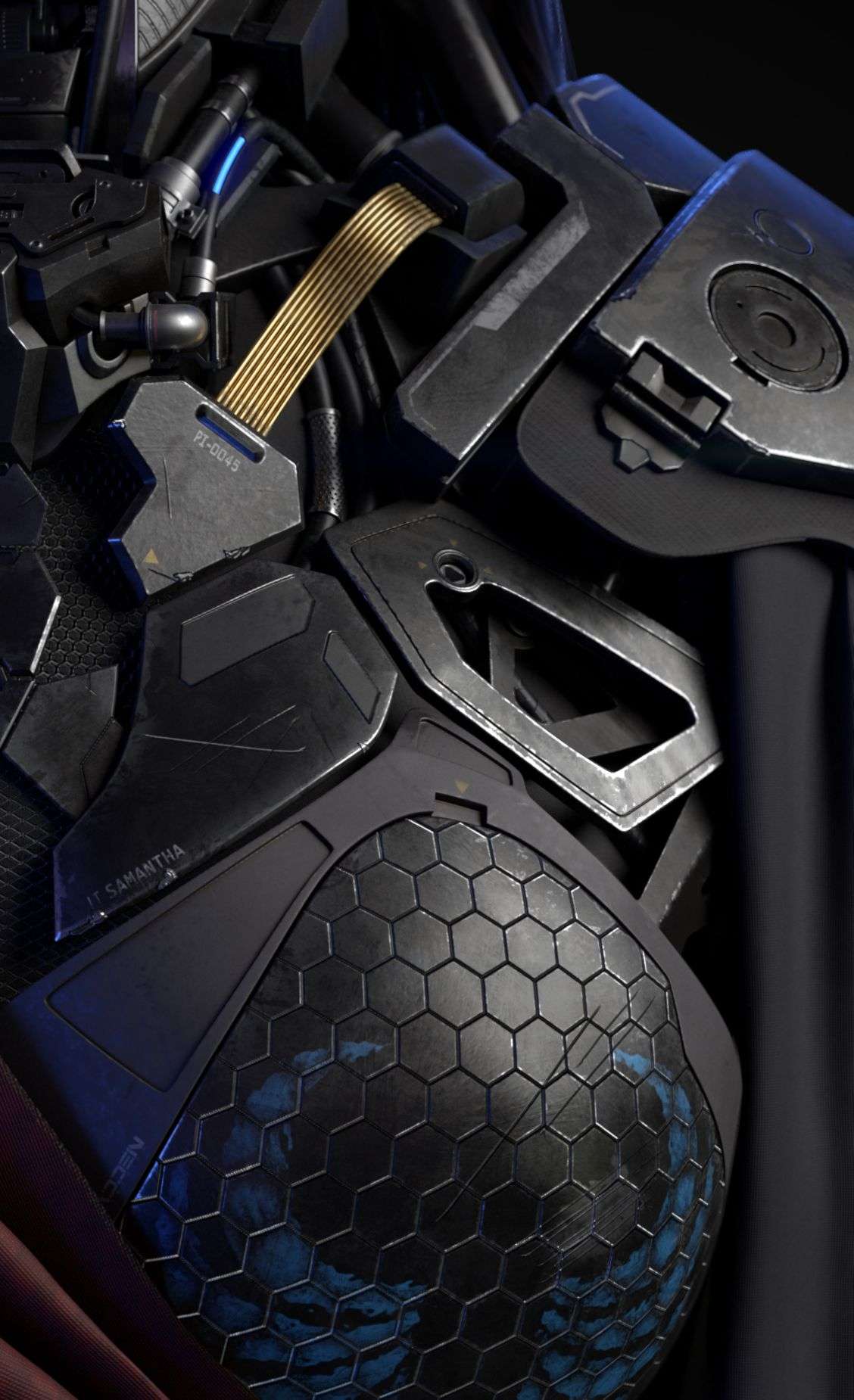
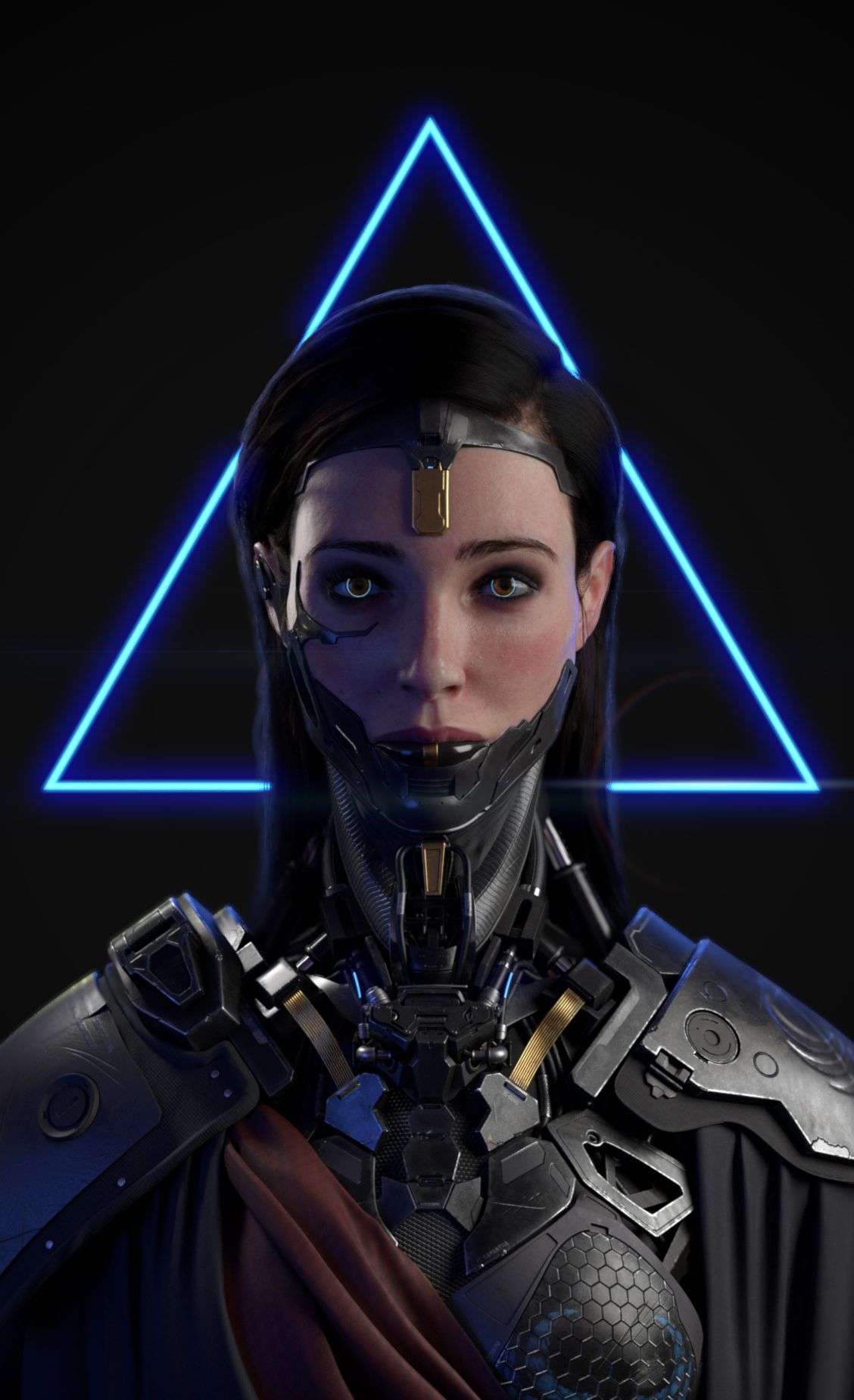
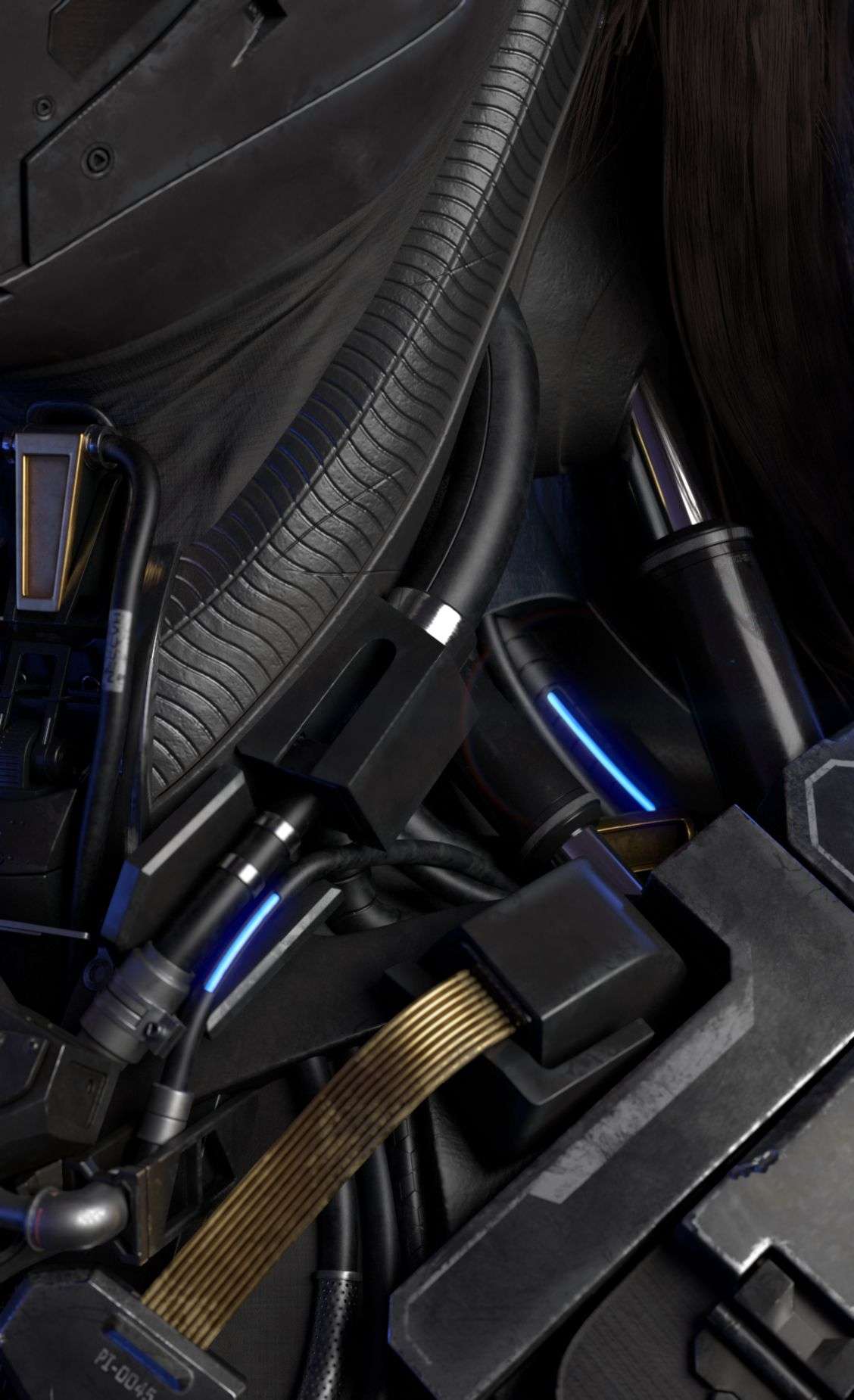
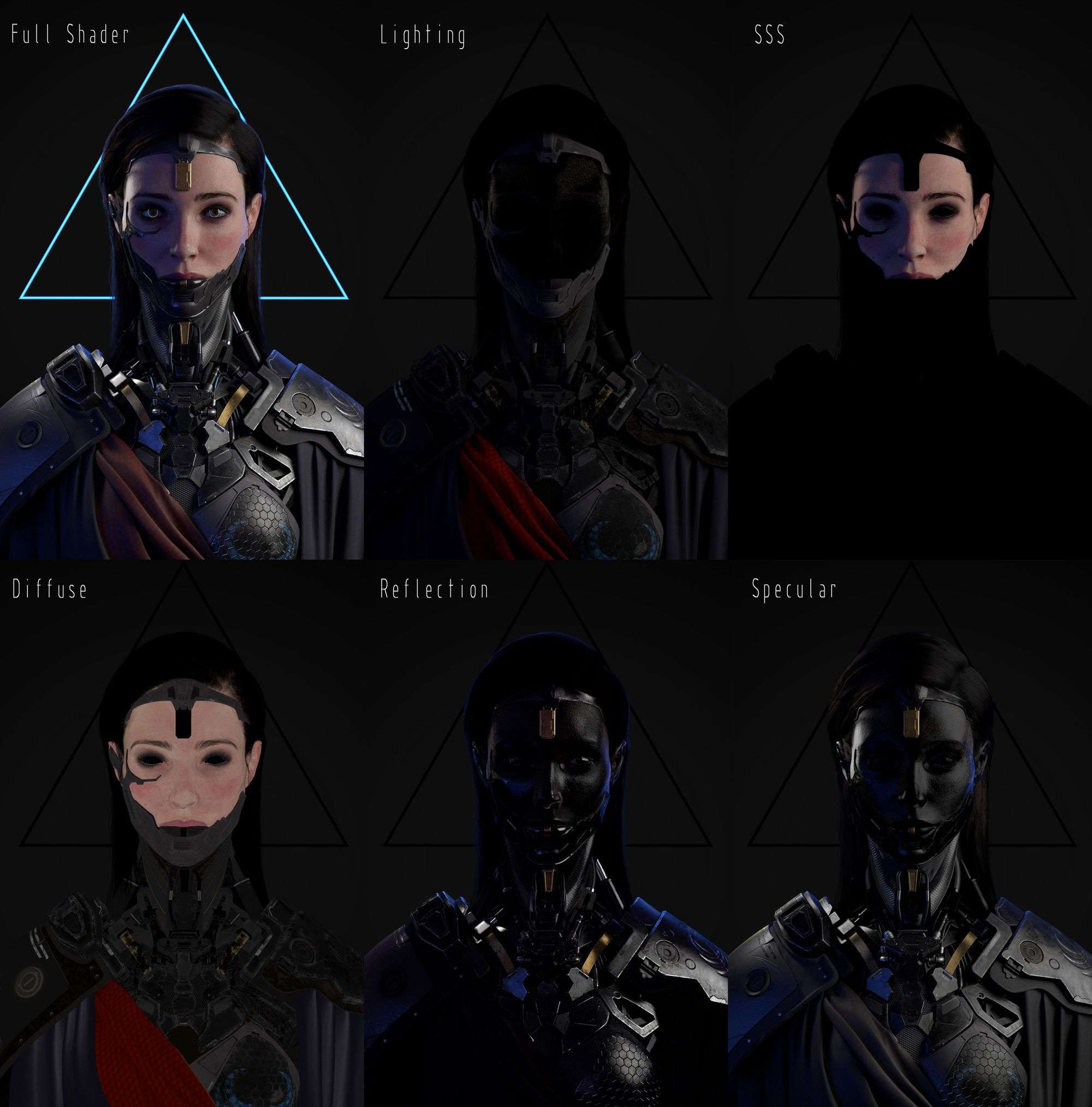
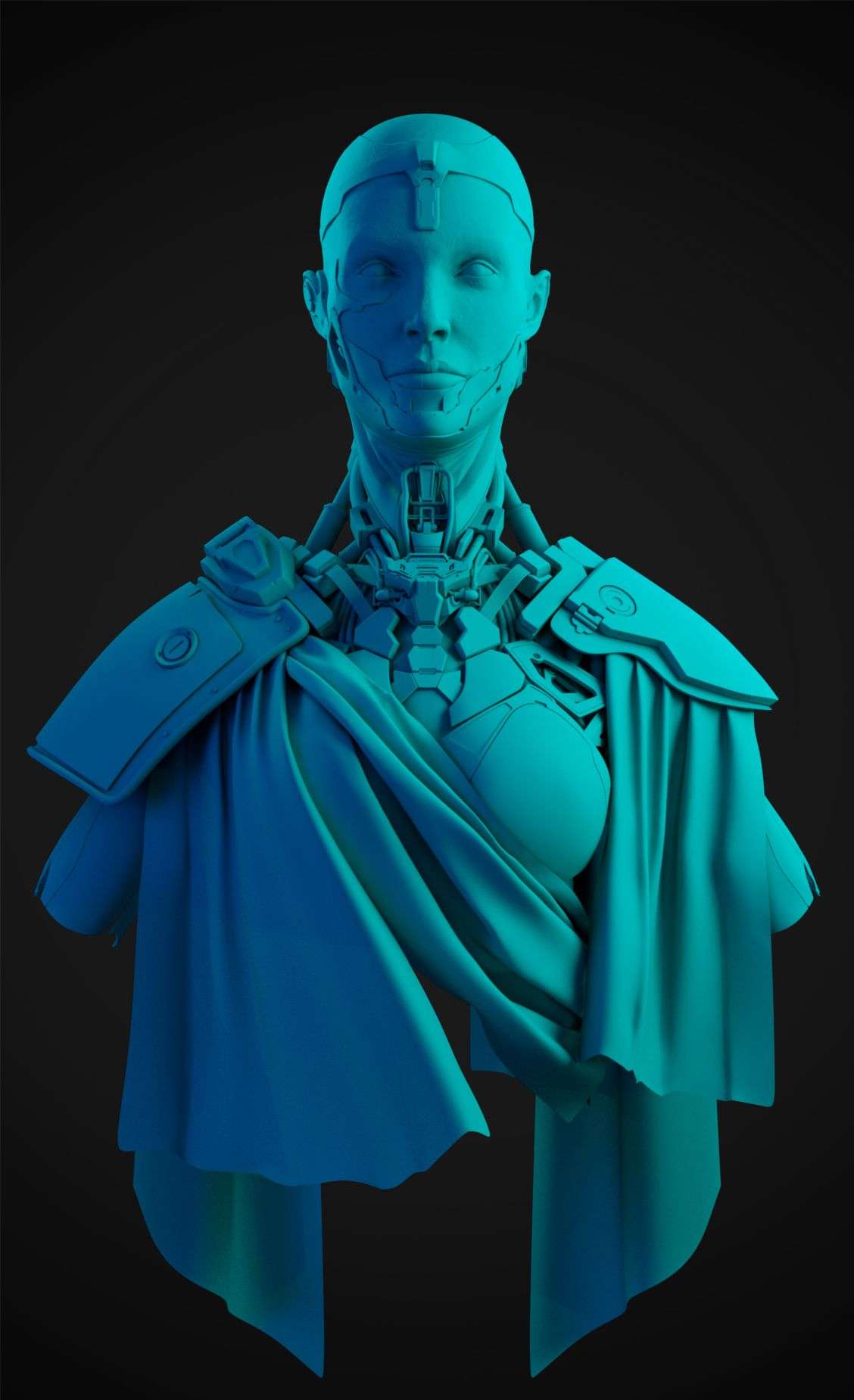
Acknowledgment.
I want to thank all the people who helped me throughout my project. My teachers Biren Venkatraman and Marco Menco for the critic and their feedback. also my friends Arash Hadavi, Simon Almeida, Nicolò Granese, Dina Salama and Shady El-laithy for always giving me a fresh eye and guiding me.
And special thanks to my wife for her continuous support.
